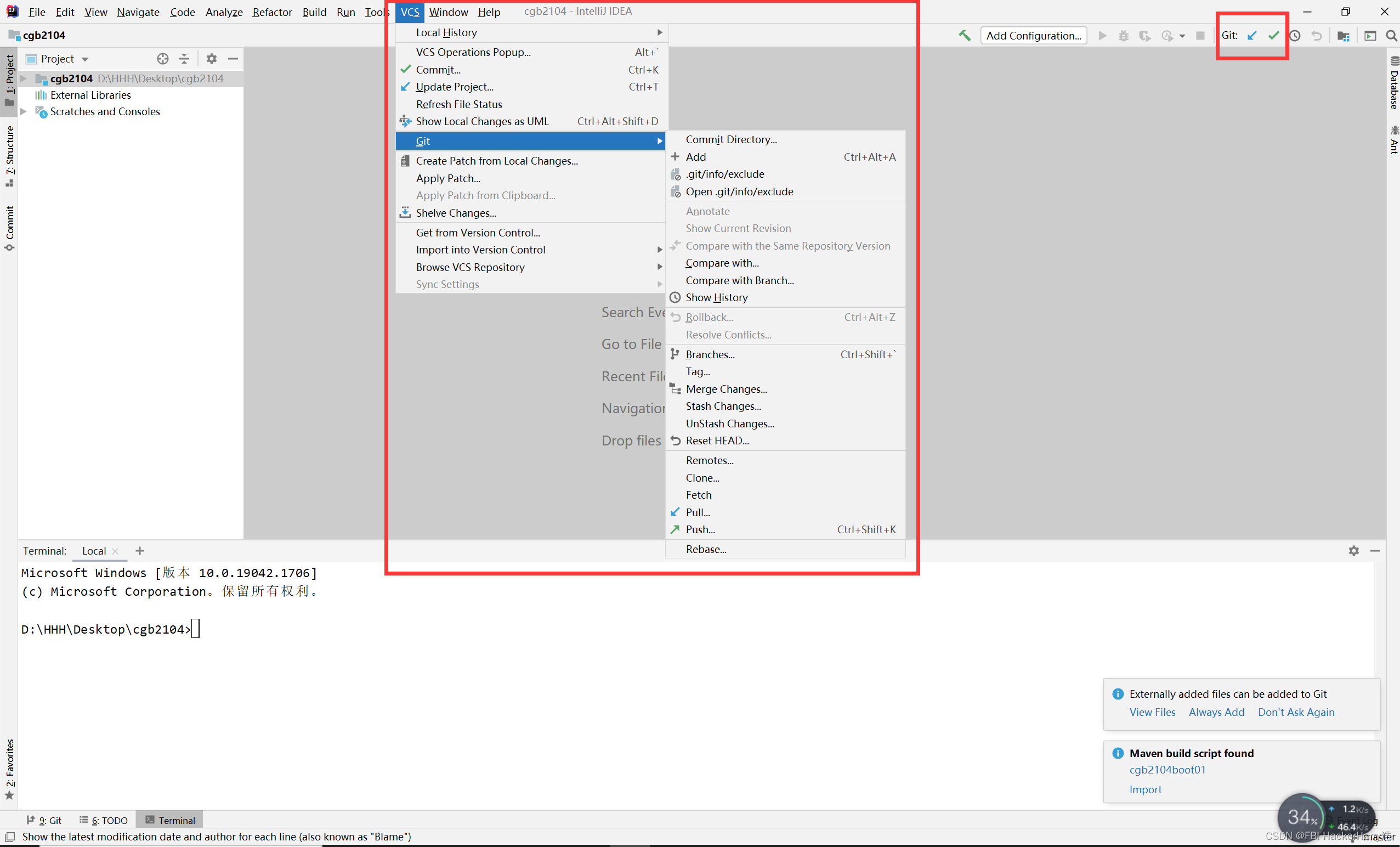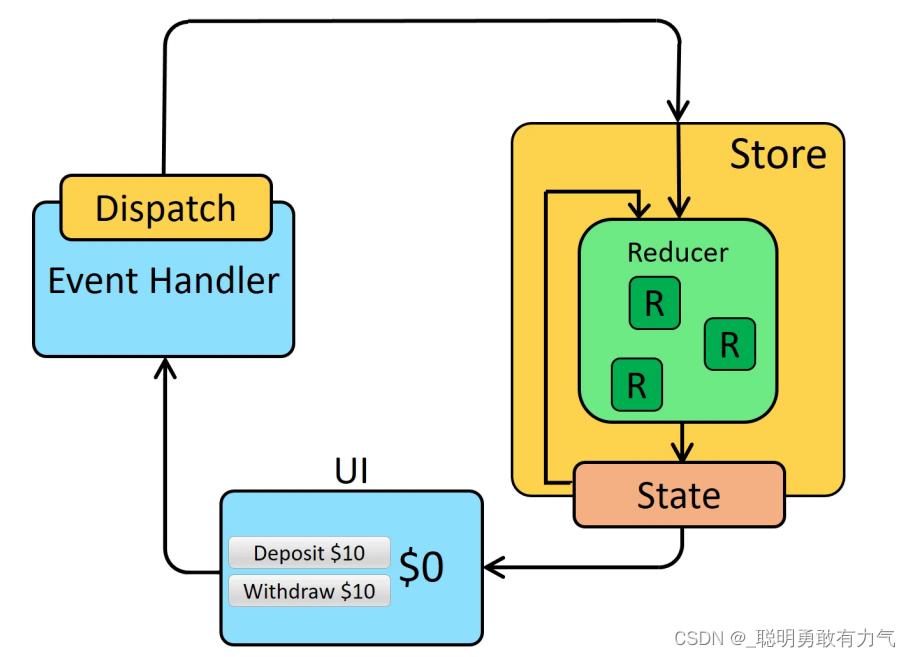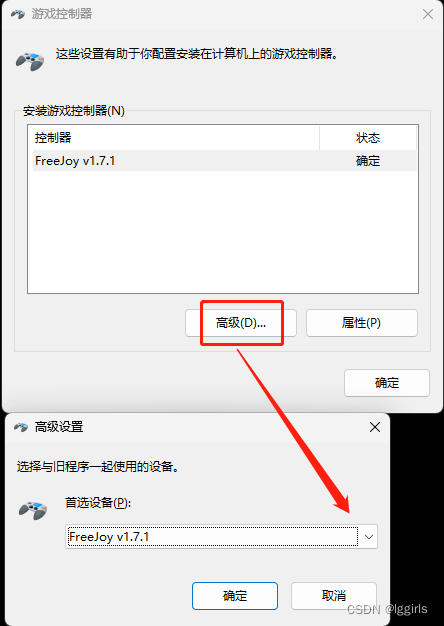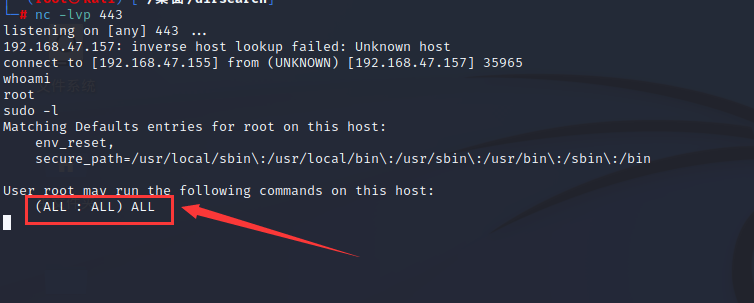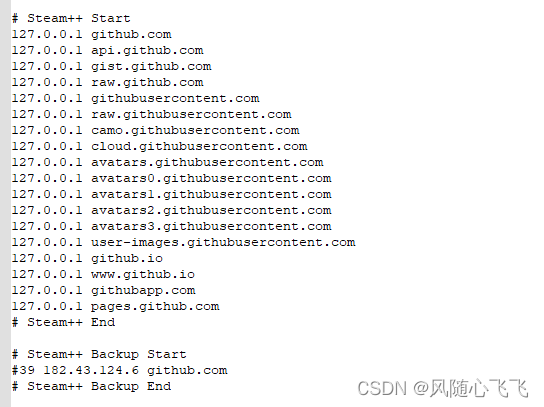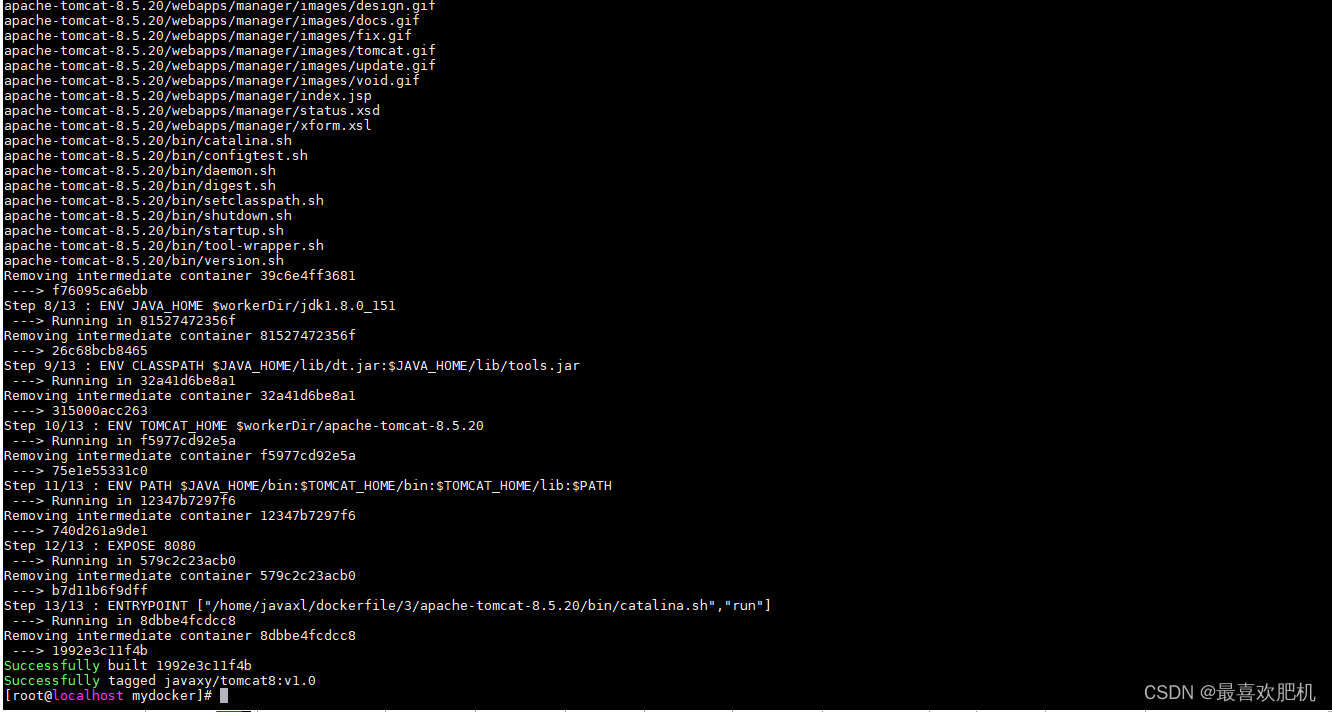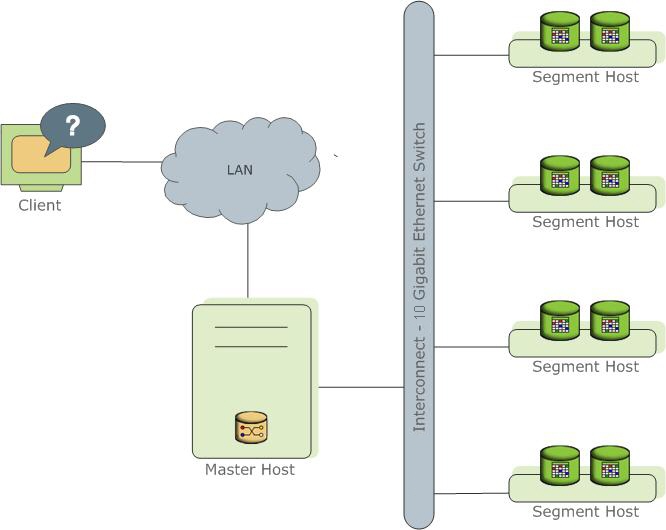STL初识
2.1 STL的诞生
- 长久以来,软件界一直希望建立一种可重复利用的东西
- C++的面向对象和泛型编程思想,目的就是复用性的提升
- 大多情况下,数据结构和算法都未能有一套标准,导致被迫从事大量重复工作
- 为了建立数据结构和算法的一套标准,诞生了STL
2.2 STL基本概念
- STL(Standard Template Library,标准模板库)
- STL 从广义上分为: 容器(container) 算法(algorithm) 迭代器(iterator)
- 容器和算法之间通过迭代器进行无缝连接。
- STL 几乎所有的代码都采用了模板类或者模板函数
2.3 STL六大组件
STL大体分为六大组件,分别是:容器、算法、迭代器、仿函数、适配器(配接器)、空间配置器
- 容器:各种数据结构,如vector、list、deque、set、map等,用来存放数据。
- 算法:各种常用的算法,如sort、find、copy、for_each等
- 迭代器:扮演了容器与算法之间的胶合剂。
- 仿函数:行为类似函数,可作为算法的某种策略。
- 适配器:一种用来修饰容器或者仿函数或迭代器接口的东西。
- 空间配置器:负责空间的配置与管理。
2.4 STL中容器、算法、迭代器
**容器:**置物之所也
STL容器就是将运用最广泛的一些数据结构实现出来
常用的数据结构:数组, 链表,树, 栈, 队列, 集合, 映射表 等
这些容器分为序列式容器和关联式容器两种:
序列式容器:强调值的排序,序列式容器中的每个元素均有固定的位置。 关联式容器:二叉树结构,各元素之间没有严格的物理上的顺序关系
**算法:**问题之解法也
有限的步骤,解决逻辑或数学上的问题,这一门学科我们叫做算法(Algorithms)
算法分为:质变算法和非质变算法。
质变算法:是指运算过程中会更改区间内的元素的内容。例如拷贝,替换,删除等等
非质变算法:是指运算过程中不会更改区间内的元素内容,例如查找、计数、遍历、寻找极值等等
**迭代器:**容器和算法之间粘合剂
提供一种方法,使之能够依序寻访某个容器所含的各个元素,而又无需暴露该容器的内部表示方式。
每个容器都有自己专属的迭代器
迭代器使用非常类似于指针,初学阶段我们可以先理解迭代器为指针
迭代器种类:
| 种类 | 功能 | 支持运算 |
| 输入迭代器 | 对数据的只读访问 | 只读,支持++、==、!= |
| 输出迭代器 | 对数据的只写访问 | 只写,支持++ |
| 前向迭代器 | 读写操作,并能向前推进迭代器 | 读写,支持++、==、!= |
| 双向迭代器 | 读写操作,并能向前和向后操作 | 读写,支持++、--, |
| 随机访问迭代器 | 读写操作,可以以跳跃的方式访问任意数据,功能最强的迭代器 | 读写,支持++、--、[n]、-n、、>= |
常用的容器中迭代器种类为双向迭代器,和随机访问迭代器
2.5 容器算法迭代器初识
了解STL中容器、算法、迭代器概念之后,我们利用代码感受STL的魅力
STL中最常用的容器为Vector,可以理解为数组,下面我们将学习如何向这个容器中插入数据、并遍历这个容器
2.5.1 vector存放内置数据类型
容器: vector
算法: for_each
迭代器: vector::iterator
#include "iostream"
#include "vector"
#include "algorithm"
using namespace std;
void myPrint(int val)
{
cout << val << endl;
}
void test()
{
//创建vector容器对象 并且通过模板参数指定容器中存放的数据类型
vector<int> v;
//向容器中放数据
v.push_back(1);
v.push_back(2);
v.push_back(3);
v.push_back(4);
v.push_back(5);
//每一个容器都有自己的迭代器,迭代器是用来遍历容器中的元素
// v.begin()返回迭代器,这个迭代器指向容器中第一个数据
// v.end()返回迭代器,这个迭代器指向容器元素的最后一个元素的下一个位置
// vector<int>::iterator 拿到vector<int>这种容器的迭代器类型
vector<int>::iterator iterBegin = v.begin();
vector<int>::iterator iterEnd = v.end();
//第一种遍历
while (iterBegin != iterEnd)
{
cout << *iterBegin << endl;
iterBegin++;
}
cout << endl;
//第二种遍历
for (vector<int>::iterator it = v.begin(); it != v.end(); it++)
{
cout << *it << endl;
}
cout << endl;
//第三种遍历
//使用STL提供的遍历算法 头文件 algorithm
for_each(v.begin(), v.end(), myPrint);
}
int main()
{
test();
return 0;
}互换容器
#include "iostream"
#include "vector"
using namespace std;
//vector容器互换
void printVector(vector<int> v) {
for (vector<int>::iterator it = v.begin(); it != v.end(); it++) {
cout << *it << " ";
}
cout << endl;
}
//1 基本使用
void test1() {
vector<int> v1;
for (int i = 0; i < 10; i++) {
v1.push_back(i);
}
cout << "交换前:" << endl;
printVector(v1);
vector<int> v2;
for (int j = 10; j > 0; j--) {
v2.push_back(j);
}
printVector(v2);
cout << "交换后:" << endl;
v1.swap(v2);
printVector(v1);
printVector(v2);
}
//2 实际用途:巧用swap可以收缩内存空间
void test2() {
vector<int> v;
for (int i = 0; i < 100000; i++) {
v.push_back(i);
}
cout << "v的容量为:" << v.capacity() << endl;
cout << "v的大小为:" << v.size() << endl;
v.resize(3);
cout << "resize后 v的容量为:" << v.capacity() << endl;
cout << "resize后 v的大小为:" << v.size() << endl;
//巧用swap收缩内存空间 后面有图片解释
vector<int>(v).swap(v);
cout << "swap后 v的容量为:" << v.capacity() << endl;
cout << "swap后 v的大小为:" << v.size() << endl;
}
int main() {
test1();
test2();
return 0;
}
交换前:
0 1 2 3 4 5 6 7 8 9
10 9 8 7 6 5 4 3 2 1
交换后:
10 9 8 7 6 5 4 3 2 1
0 1 2 3 4 5 6 7 8 9
v的容量为:131072
v的大小为:100000
resize后 v的容量为:131072
resize后 v的大小为:3
swap后 v的容量为:3
swap后 v的大小为:3总结:swap可以使两个容器互换,可以达到实用的收缩内存效果


上图解释:
vector(v) 利用拷贝构造函数创建了一个匿名对象,新的对象没有名,x代表这个匿名对象,会按照v当前size来初始化匿名对象,所以匿名对象一开始size=3,capacity=3,只不过这是匿名对象。
上面的匿名对象,系统会帮助我们回收,匿名对象有一个特点,当前行执行完,编译器发现它是匿名对象,马上回收。
#include "iostream"
#include "vector"
using namespace std;
//vector 容器 预留空间
void test() {
vector<int> v;
int num = 0;//统计开辟次数
int *p = nullptr;
// for (int i = 0; i < 100000; i++) {
// v.push_back(i);
// if (p != &v[0]) {
// p = &v[0];
// num++;
// }
// }
int capacity = 0;
for (int i = 0; i < 100000; i++) {
v.push_back(i);
if (v.capacity() != capacity) {
capacity = v.capacity();
num++;
}
}
cout << "不用reserve时,动态扩展次数:" << num << endl;
int num2 = 0;
int capacity2 = 0;
vector<int> v2;
v2.reserve(100000);
for (int j = 0; j < 100000; j++) {
v2.push_back(j);
if (v2.capacity() != capacity) {
capacity = v2.capacity();
num2++;
}
}
cout << "使用reserve时,动态扩展次数:" << num2 << endl;
}
int main() {
test();
return 0;
}
不用reserve时,动态扩展次数:18
使用reserve时,动态扩展次数:1
#include "iostream"
#include "deque"
#include "vector"
#include "algorithm"
using namespace std;
void printDeque(deque<int> &d) {
for (deque<int>::const_iterator it = d.begin(); it != d.end(); it++) {
cout << *it << " ";
}
cout << endl;
}
//deque容器排序
void test() {
deque<int> d;
d.push_back(10);
d.push_back(20);
d.push_back(30);
d.push_front(100);
d.push_front(200);
d.push_front(300);
cout << "排序前:" << endl;
printDeque(d);
//默认从小到大 升序
//对于支持随机访问的迭代器的容器,都可以利用sort算法直接对其进行排序
//vector容器也可以利用 sort进行排序
sort(d.begin(), d.end());
cout << "排序后:" << endl;
printDeque(d);
}
void test2() {
vector<int> v;
v.push_back(134);
v.push_back(54);
v.push_back(1432);
v.push_back(43);
v.push_back(1);
sort(v.begin(), v.end());
cout << "vector 排序后:" << endl;
for (vector<int>::iterator it = v.begin(); it != v.end(); it++) {
cout << *it << " ";
}
cout << endl;
}
int main() {
test();
test2();
return 0;
}
排序前:
300 200 100 10 20 30
排序后:
10 20 30 100 200 300
vector 排序后:
1 43 54 134 1432
总结:sort算法非常实用,使用时包含头文件algorithm
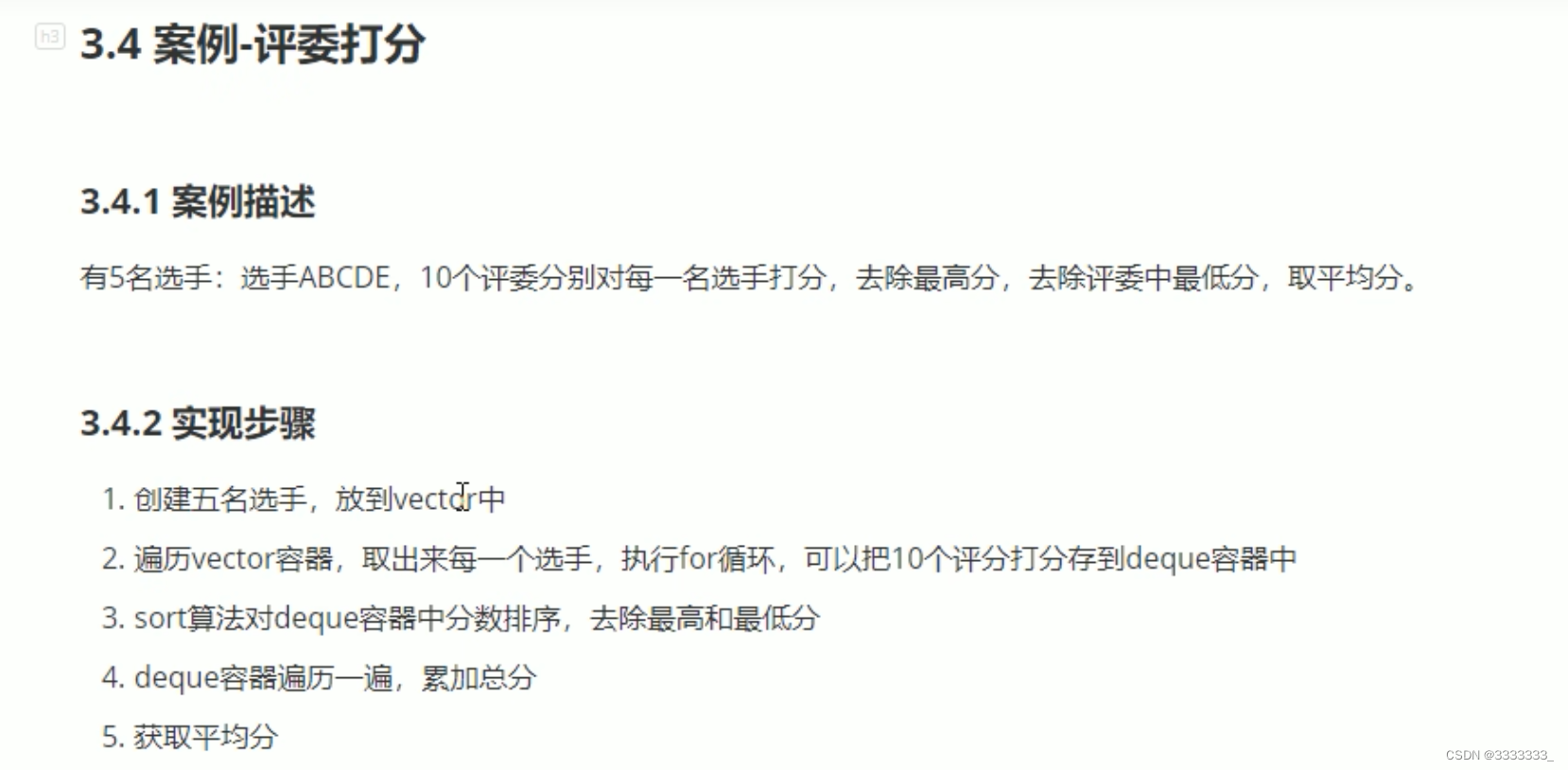
#include "iostream"
#include "vector"
#include "deque"
#include "algorithm"
using namespace std;
class Person {
public:
Person(string name, int score) {
this->m_Name = name;
this->m_Score = score;
}
int m_Score;
string m_Name;
};
void createPerson(vector<Person> &vp) {
string nameSeed = "ABCDE";
for (int i = 0; i < 5; i++) {
Person p("选手" + to_string(i + 1), 0);
vp.push_back(p);
}
}
void printInfo(vector<Person> &p) {
for (vector<Person>::iterator it = p.begin(); it != p.end(); it++) {
cout << "姓名:" << (*it).m_Name << " 平均分:" << (*it).m_Score << endl;
}
}
void setScore(vector<Person> &p) {
srand((unsigned int) time(NULL));
for (vector<Person>::iterator it = p.begin(); it != p.end(); it++) {
deque<int> d;
cout << "选手:" << it->m_Name << "的打分:" << endl;
for (int i = 0; i < 10; i++) {
int score = rand() % 41 + 60;
d.push_back(score);
cout << score << " ";
}
cout << endl;
//排序
sort(d.begin(), d.end());
//去除最高和最低
d.pop_back();
d.pop_front();
int sum = 0;
for (deque<int>::const_iterator dit = d.begin(); dit != d.end(); dit++) {
sum += *dit;
}
it->m_Score = sum / d.size();
}
}
//评委打分
void test() {
//1创建5名选手
vector<Person> v;
createPerson(v);
printInfo(v);
//2 给5名选手打分
setScore(v);
printInfo(v);
//3 显示最后得分
}
int main() {
test();
return 0;
}
姓名:选手1 平均分:0
姓名:选手2 平均分:0
姓名:选手3 平均分:0
姓名:选手4 平均分:0
姓名:选手5 平均分:0
选手:选手1的打分:
83 96 87 61 93 65 87 77 71 73
选手:选手2的打分:
83 70 77 97 63 88 79 62 70 70
选手:选手3的打分:
94 100 64 68 83 96 81 92 85 73
选手:选手4的打分:
65 78 89 62 73 67 71 96 90 62
选手:选手5的打分:
63 78 93 99 84 81 83 88 62 91
姓名:选手1 平均分:79
姓名:选手2 平均分:75
姓名:选手3 平均分:84
姓名:选手4 平均分:74
姓名:选手5 平均分:82
#include "iostream"
#include "stack"
using namespace std;
//栈
//特点,先进后出
void test() {
stack<int> s;
s.push(1);
s.push(2);
s.push(3);
s.push(4);
cout << "栈的大小:" << s.size() << endl;
while (!s.empty()) {
cout << s.top() << endl;
s.pop();
}
cout << "栈的大小:" << s.size() << endl;
}
int main() {
test();
return 0;
}#include "iostream"
#include "queue"
using namespace std;
//queue容器
void test() {
queue<int> q;
q.push(1);
q.push(2);
q.push(3);
q.push(4);
while (!q.empty()) {
cout << "front=" << q.front() << " back=" << q.back() << " q.size() =" << q.size() << endl;
q.pop();
}
}
int main() {
test();
return 0;
}
front=1 back=4 q.size() =4
front=2 back=4 q.size() =3
front=3 back=4 q.size() =2
front=4 back=4 q.size() =1
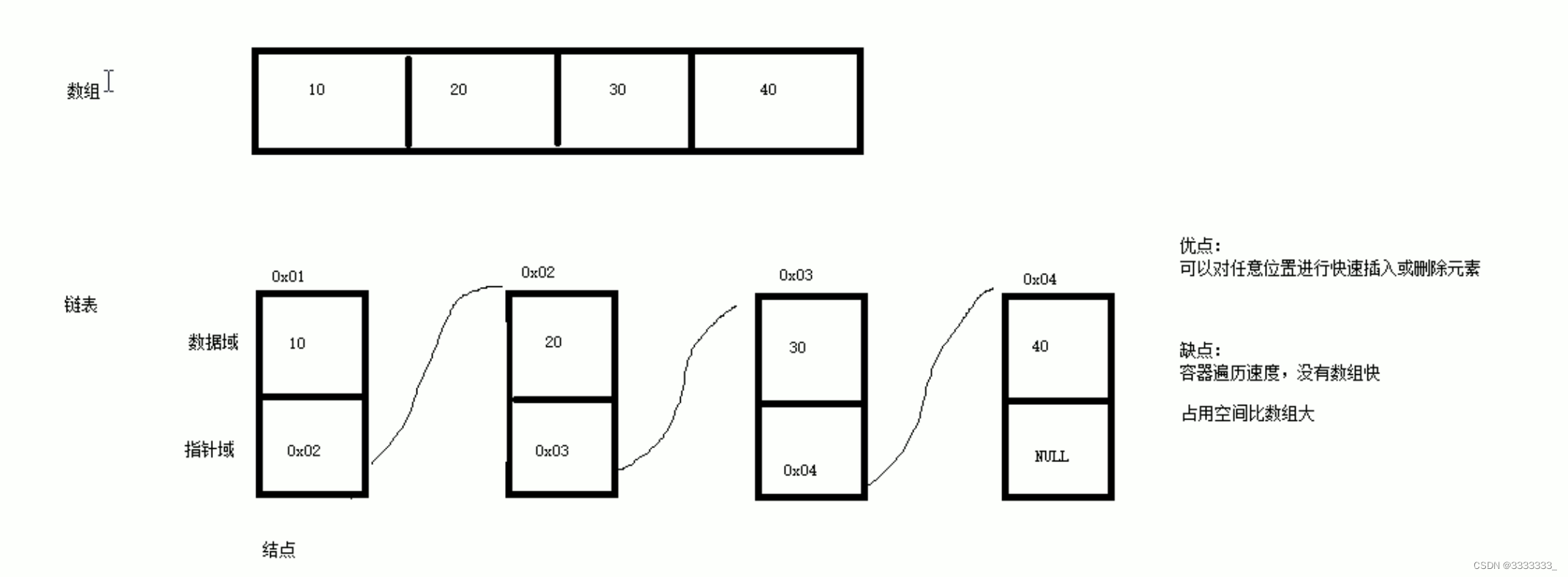
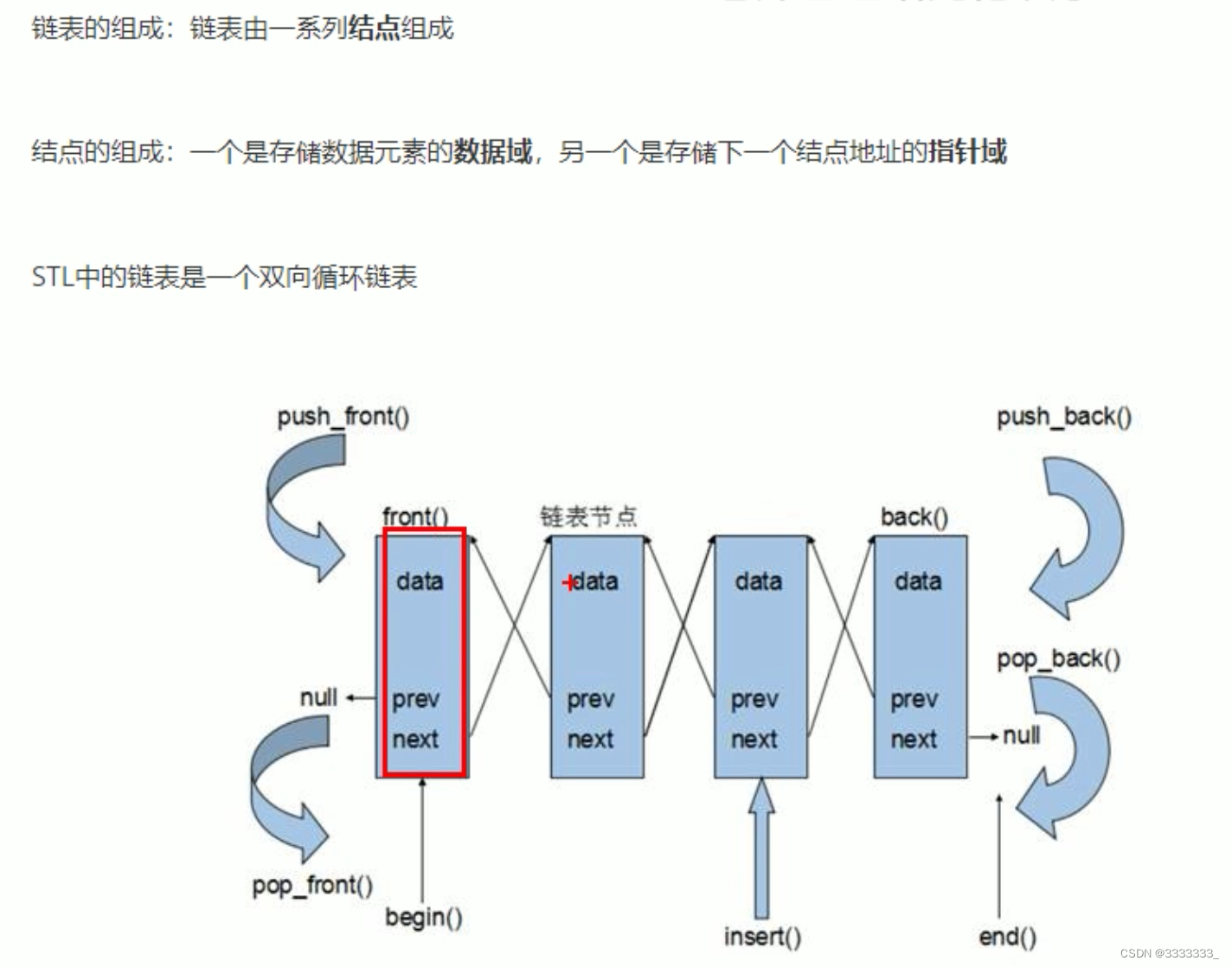
#include "iostream"
#include "list"
using namespace std;
void printList(const list<int> &l) {
for (auto i:l) {
cout << i << " ";
}
cout << endl;
}
//list容器构造函数
void test() {
list<int> l1;
l1.push_back(1);
l1.push_back(2);
l1.push_back(3);
l1.push_back(4);
printList(l1);
//区间方式构造
list<int> l2(l1.begin(), l1.end());
printList(l2);
//拷贝构造
list<int> l3(l2);
printList(l3);
//n个element
list<int> l4(10, 1);
printList(l4);
}
int main() {
test();
return 0;
}
1 2 3 4
1 2 3 4
1 2 3 4
1 1 1 1 1 1 1 1 1 1 #include "iostream"
#include "list"
using namespace std;
void printList(const list<int> &l) {
for (list<int>::const_iterator it = l.begin(); it != l.end(); it++) {
cout << *it << " ";
}
cout << endl;
}
//list赋值和交换
void test() {
list<int> l1;
l1.push_back(1);
l1.push_back(2);
l1.push_back(3);
l1.push_back(4);
printList(l1);
list<int> l2 = l1;
printList(l2);
list<int> l3;
l3.assign(l2.begin(), l2.end());
printList(l3);
list<int> l4;
l4.assign(10, 1);
printList(l4);
}
//交换
void test2() {
list<int> l1;
l1.push_back(1);
l1.push_back(2);
l1.push_back(3);
l1.push_back(4);
list<int> l2;
l2.assign(10, 1);
cout << "交换前:" << endl;
printList(l1);
printList(l2);
l1.swap(l2);
cout << "交换后:" << endl;
printList(l1);
printList(l2);
};
int main() {
test();
cout << endl;
test2();
return 0;
}
1 2 3 4
1 2 3 4
1 2 3 4
1 1 1 1 1 1 1 1 1 1
交换前:
1 2 3 4
1 1 1 1 1 1 1 1 1 1
交换后:
1 1 1 1 1 1 1 1 1 1
1 2 3 4
#include "iostream"
#include "list"
using namespace std;
void printList(const list<int> &l) {
for (list<int>::const_iterator it = l.begin(); it != l.end(); it++) {
cout << *it << " ";
}
cout << endl;
}
//list 大小操作
void test() {
list<int> l1;
l1.push_back(1);
l1.push_back(2);
l1.push_back(3);
l1.push_back(4);
printList(l1);
if (l1.empty()) {
cout << "l1为空" << endl;
} else {
cout << "l1不为空" << endl;
cout << "l1个数:" << l1.size() << endl;
}
//重新指定大小
l1.resize(2);
printList(l1);
l1.resize(4, 100);
printList(l1);
}
int main() {
test();
return 0;
}
1 2 3 4
l1不为空
l1个数:4
1 2
1 2 100 100#include "iostream"
#include "list"
using namespace std;
void printList(list<int> &l) {
for (auto i:l) {
cout << i << " ";
}
cout << endl;
}
//list 插入和删除
void test() {
list<int> l1;
//尾插
l1.push_back(1);
l1.push_back(2);
l1.push_back(3);
l1.push_back(4);
//头插
l1.push_front(100);
l1.push_front(200);
l1.push_front(300);
printList(l1);
//尾删
l1.pop_back();
//头删
l1.pop_front();
printList(l1);
// 200 100 1 2 3
l1.insert(l1.begin(), 1000);
// 1000 200 100 1 2 3
printList(l1);
list<int>::iterator it = l1.begin();
l1.insert(++it, 2000);
// 1000 2000 200 100 1 2 3
printList(l1);
it = l1.begin();
//删除
l1.erase(it);
// 2000 200 100 1 2 3
printList(l1);
l1.erase(++it);
// 200 100 1 2 3
printList(l1);
it = l1.begin();
l1.erase(++it);
// 200 1 2 3
printList(l1);
//移除
l1.push_back(200);
l1.push_back(1);
// 200 1 2 3 200 1
printList(l1);
l1.remove(1);
// 200 2 3 200
printList(l1);
//clear
l1.clear();
printList(l1);
}
int main() {
test();
return 0;
}
300 200 100 1 2 3 4
200 100 1 2 3
1000 200 100 1 2 3
1000 2000 200 100 1 2 3
2000 200 100 1 2 3
200 100 1 2 3
200 1 2 3
200 1 2 3 200 1
200 2 3 200
list 反转和排序
**功能描述:**
* 将容器中的元素反转,以及将容器中的数据进行排序
**函数原型:**
* `reverse();` //反转链表
* `sort();` //链表排序
#include "iostream"
using namespace std;
#include "list"
#include "algorithm"
void printList(const list<int> &l)
{
for (list<int>::const_iterator it = l.begin(); it != l.end(); it++)
{
cout << *it << " ";
}
cout << endl;
}
bool myCompare(int a, int b)
{
return a > b;
}
void test()
{
list<int> l;
l.push_back(1);
l.push_back(2);
l.push_back(3);
l.push_back(4);
printList(l);
//反转
l.reverse();
printList(l);
//排序
// sort(l.begin(), l.end()); list不支持随机访问,不能用sort,得用内置的排序算法
l.sort(); // 1 2 3 4 默认从小到大排序
printList(l);
l.sort(myCompare); //指定规则,从大到小
printList(l);
}
int main()
{
test();
return 0;
}总结:
* 反转 --- reverse
* 排序 --- sort (成员函数)
3.7.8 排序案例
案例描述:将Person自定义数据类型进行排序,Person中属性有姓名、年龄、身高
排序规则:按照年龄进行升序,如果年龄相同按照身高进行降序
#include "iostream"
#include "list"
using namespace std;
//排序案例
class Person
{
public:
Person(string name, int age, int height)
{
mage = age;
mname = name;
mheight = height;
}
string mname;
int mage;
int mheight;
};
void printList(const list<Person> &l)
{
for (list<Person>::const_iterator it = l.begin(); it != l.end(); it++)
{
cout << it->mname << " " << it->mage << " " << it->mheight << endl;
}
}
bool myCompare(const Person &p1, const Person &p2)
{
if (p1.mage == p2.mage)
{
return p1.mheight > p2.mheight;
}
return p1.mage < p2.mage;
}
void test()
{
Person p1("a", 33, 178);
Person p2("b", 45, 172);
Person p3("c", 22, 183);
Person p4("d", 22, 156);
Person p5("e", 22, 188);
list<Person> l;
l.push_back(p1);
l.push_back(p2);
l.push_back(p3);
l.push_back(p4);
l.push_back(p5);
cout << "before sort:" << endl;
printList(l);
l.sort(myCompare);
cout << "after sort:" << endl;
printList(l);
}
int main()
{
test();
return 0;
}
before sort:
a 33 178
b 45 172
c 22 183
d 22 156
e 22 188
after sort:
e 22 188
c 22 183
d 22 156
a 33 178
b 45 172总结:
- 对于自定义数据类型,必须要指定排序规则,否则编译器不知道如何进行排序
- 高级排序只是在排序规则上再进行一次逻辑规则制定,并不复杂
3.8 set/ multiset 容器
3.8.1 set基本概念
简介:
- 所有元素都会在插入时自动被排序
本质:
- set/multiset属于关联式容器,底层结构是用二叉树实现。
set和multiset区别:
- set不允许容器中有重复的元素
- multiset允许容器中有重复的元素
3.8.2 set构造和赋值
功能描述:创建set容器以及赋值
构造:
- set st; //默认构造函数:
- set(const set &st); //拷贝构造函数
赋值:
- set& operator=(const set &st); //重载等号操作符
#include "iostream"
#include "set"
using namespace std;
// set
void printSet(const set<int> s)
{
for (set<int>::iterator it = s.begin(); it != s.end(); it++)
{
cout << *it << " ";
}
cout << endl;
}
void test()
{
set<int> s;
s.insert(1);
s.insert(3);
s.insert(43);
s.insert(33);
s.insert(2);
printSet(s); //排好序的 默认是从小打到
set<int> s2(s);
printSet(s2);
set<int> s3;
s3 = s2;
printSet(s3);
}
int main()
{
test();
return 0;
}总结:
- set容器插入数据时用insert
- set容器插入数据的数据会自动排序
3.8.3 set大小和交换
功能描述:
- 统计set容器大小以及交换set容器
函数原型:
- size(); //返回容器中元素的数目
- empty(); //判断容器是否为空
- swap(st); //交换两个集合容器
#include "iostream"
#include "set"
using namespace std;
// set
void printSet(const set<int> s)
{
for (set<int>::iterator it = s.begin(); it != s.end(); it++)
{
cout << *it << " ";
}
cout << endl;
}
void test()
{
set<int> s;
s.insert(1);
s.insert(3);
s.insert(43);
s.insert(33);
s.insert(2);
printSet(s); //排好序的 默认是从小打到
set<int> s2(s);
printSet(s2);
set<int> s3;
s3 = s2;
printSet(s3);
}
//大小
void test2()
{
set<int> s1;
s1.insert(1);
s1.insert(3);
s1.insert(2);
s1.insert(4);
if (s1.empty())
{
cout << "empty" << endl;
}
else
{
cout << "not empty,size is " << s1.size() << endl;
}
}
//交换
void test3()
{
set<int> s1;
s1.insert(1);
s1.insert(3);
s1.insert(2);
s1.insert(4);
set<int> s2;
s2.insert(100);
s2.insert(300);
s2.insert(200);
s2.insert(400);
cout << "before swap" << endl;
printSet(s1);
printSet(s2);
cout << endl;
cout << "after swap" << endl;
s1.swap(s2);
printSet(s1);
printSet(s2);
}
int main()
{
test();
test2();
test3();
return 0;
}总结:
- 统计大小 --- size
- 判断是否为空 --- empty
- 交换容器 --- swap
3.8.4 set插入和删除
功能描述:
- set容器进行插入数据和删除数据
函数原型:
- insert(elem); //在容器中插入元素。
- clear(); //清除所有元素
- erase(pos); //删除pos迭代器所指的元素,返回下一个元素的迭代器。
- erase(beg, end); //删除区间[beg,end)的所有元素 ,返回下一个元素的迭代器。
- erase(elem); //删除容器中值为elem的元素。
#include "iostream"
#include "set"
using namespace std;
// set
void printSet(const set<int> s)
{
for (set<int>::iterator it = s.begin(); it != s.end(); it++)
{
cout << *it << " ";
}
cout << endl;
}
void test()
{
set<int> s1;
//插入
s1.insert(10);
s1.insert(30);
s1.insert(20);
s1.insert(40);
printSet(s1);
//删除
s1.erase(s1.begin());
printSet(s1);
s1.erase(30);
printSet(s1);
//清空
// s1.erase(s1.begin(), s1.end());//等同下面
s1.clear();
printSet(s1);
}
int main()
{
test();
return 0;
}总结:
- 插入 --- insert
- 删除 --- erase
- 清空 --- clear
3.8.5 set查找和统计
功能描述:
- 对set容器进行查找数据以及统计数据
函数原型:
- find(key); //查找key是否存在,若存在,返回该键的元素的迭代器;若不存在,返回set.end();
- count(key); //统计key的元素个数
#include "iostream"
using namespace std;
#include "set"
void test()
{
set<int> s;
s.insert(1);
s.insert(2);
s.insert(3);
s.insert(4);
//查找
set<int>::iterator it = s.find(3);
if (it != s.end())
{
cout << "found" << endl;
}
else
{
cout << "not found" << endl;
}
//统计
int num = s.count(2);
cout << "num:" << num << endl;
}
int main()
{
test();
return 0;
}总结:
- 查找 --- find (返回的是迭代器)
- 统计 --- count (对于set,结果为0或者1)
3.8.6 set和multiset区别
学习目标:
- 掌握set和multiset的区别
区别:
- set不可以插入重复数据,而multiset可以
- set插入数据的同时会返回插入结果,表示插入是否成功
- multiset不会检测数据,因此可以插入重复数据
#include "iostream"
#include "set"
using namespace std;
// set 和 multiset 区别
void test()
{
set<int> s;
pair<set<int>::iterator, bool> ret = s.insert(10);
if (ret.second)
{
cout << "fisrt insert ok" << endl;
}
else
{
cout << "fisrt insert not ok" << endl;
}
ret = s.insert(10);
if (ret.second)
{
cout << "second insert ok" << endl;
}
else
{
cout << "second insert not ok" << endl;
}
// multiset
multiset<int> ms;
ms.insert(1);
ms.insert(2);
ms.insert(1);
for (multiset<int>::iterator it = ms.begin(); it != ms.end(); it++)
{
cout << *it << " ";
}
cout << endl;
}
int main()
{
test();
return 0;
}
fisrt insert ok
second insert not ok
1 1 2总结:
- 如果不允许插入重复数据可以利用set
- 如果需要插入重复数据利用multiset
3.8.7 pair对组创建
功能描述:
- 成对出现的数据,利用对组可以返回两个数据
两种创建方式:
- pair p ( value1, value2 );
- pair p = make_pair( value1, value2 );
#include "iostream"
using namespace std;
//创建对组
void test()
{
pair<string, int> p("aa", 1);
cout << p.first << " " << p.second << endl;
pair<int, char> p2 = make_pair(1, 'c');
cout << p2.first << " " << p2.second << endl;
}
int main()
{
test();
return 0;
}
aa 1
1 c总结:
两种方式都可以创建对组,记住一种即可
3.8.8 set容器排序
学习目标:
- set容器默认排序规则为从小到大,掌握如何改变排序规则
主要技术点:
- 利用仿函数,可以改变排序规则
#include "iostream"
#include "set"
using namespace std;
class MyCompare
{
public:
bool operator()(int a, int b)
{
return a > b;
}
};
void test()
{
set<int> s1;
s1.insert(10);
s1.insert(40);
s1.insert(20);
s1.insert(30);
s1.insert(50);
//默认从小到大
for (set<int>::iterator it = s1.begin(); it != s1.end(); it++)
{
cout << *it << " ";
}
cout << endl;
//指定排序规则
set<int, MyCompare> s2;
s2.insert(10);
s2.insert(40);
s2.insert(20);
s2.insert(30);
s2.insert(50);
for (set<int, MyCompare>::iterator it = s2.begin(); it != s2.end(); it++)
{
cout << *it << " ";
}
cout << endl;
}
int main()
{
test();
return 0;
}
10 20 30 40 50
50 40 30 20 10总结:利用仿函数可以指定set容器的排序规则
示例二 set存放自定义数据类型
#include "iostream"
#include "set"
using namespace std;
class Person
{
public:
Person(string name, int age)
{
m_Name = name;
m_Age = age;
}
string m_Name;
int m_Age;
};
class comparePerson
{
public:
bool operator()(const Person &p1, const Person &p2)
{
return p1.m_Age > p2.m_Age;
}
};
void test()
{
set<Person, comparePerson> s;
Person p1("fad", 23);
Person p2("sgdf", 27);
Person p3("hgf", 25);
Person p4("grwe", 21);
s.insert(p1);
s.insert(p2);
s.insert(p3);
s.insert(p4);
for (set<Person, comparePerson>::iterator it = s.begin(); it != s.end(); it++)
{
cout << "name: " << it->m_Name << " age: " << it->m_Age << endl;
}
}
int main()
{
test();
return 0;
}
name: sgdf age: 27
name: hgf age: 25
name: fad age: 23
name: grwe age: 21总结:
对于自定义数据类型,set必须指定排序规则才可以插入数据
3.9 map/ multimap容器
3.9.1 map基本概念
简介:
- map中所有元素都是pair
- pair中第一个元素为key(键值),起到索引作用,第二个元素为value(实值)
- 所有元素都会根据元素的键值自动排序
本质:
- map/multimap属于关联式容器,底层结构是用二叉树实现。
优点:
- 可以根据key值快速找到value值
map和multimap区别:
- map不允许容器中有重复key值元素
- multimap允许容器中有重复key值元素
3.9.2 map构造和赋值
功能描述:
- 对map容器进行构造和赋值操作
函数原型:
构造:
- map mp; //map默认构造函数:
- map(const map &mp); //拷贝构造函数
赋值:
- map& operator=(const map &mp); //重载等号操作符
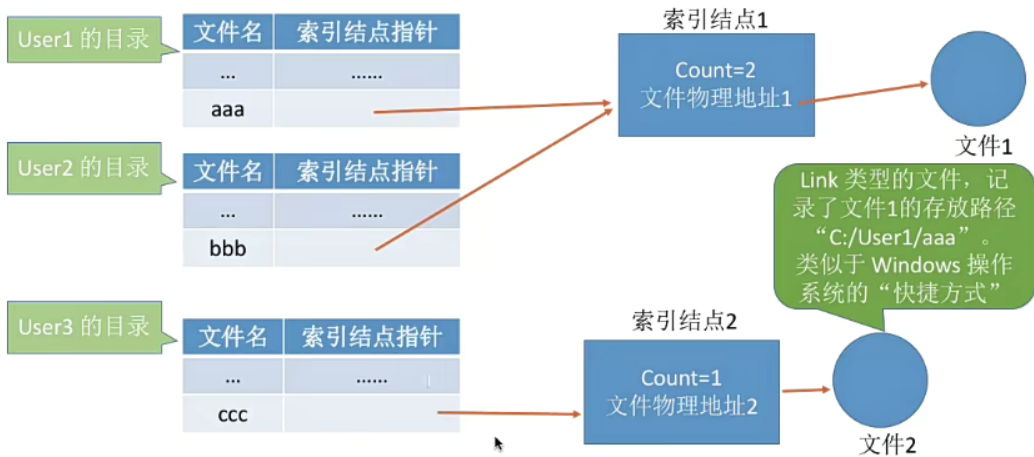



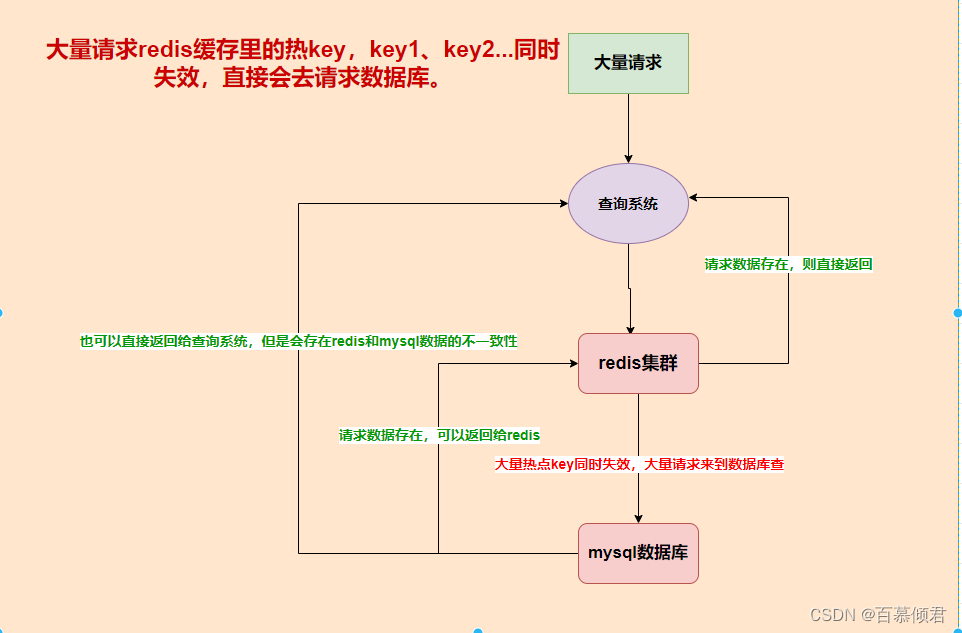

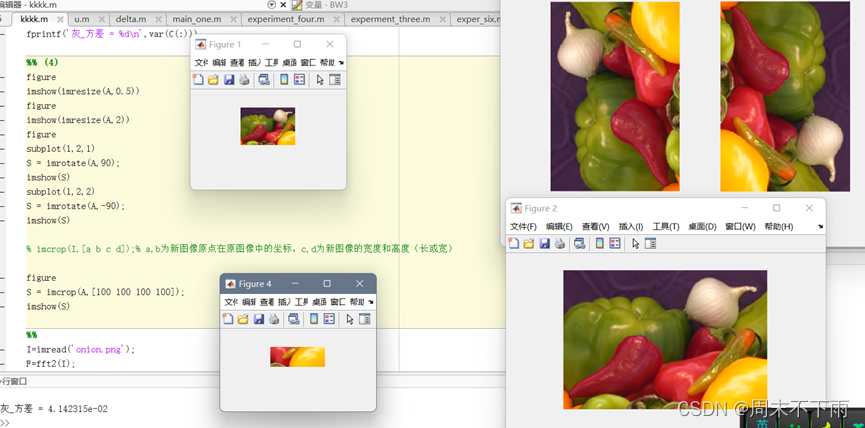
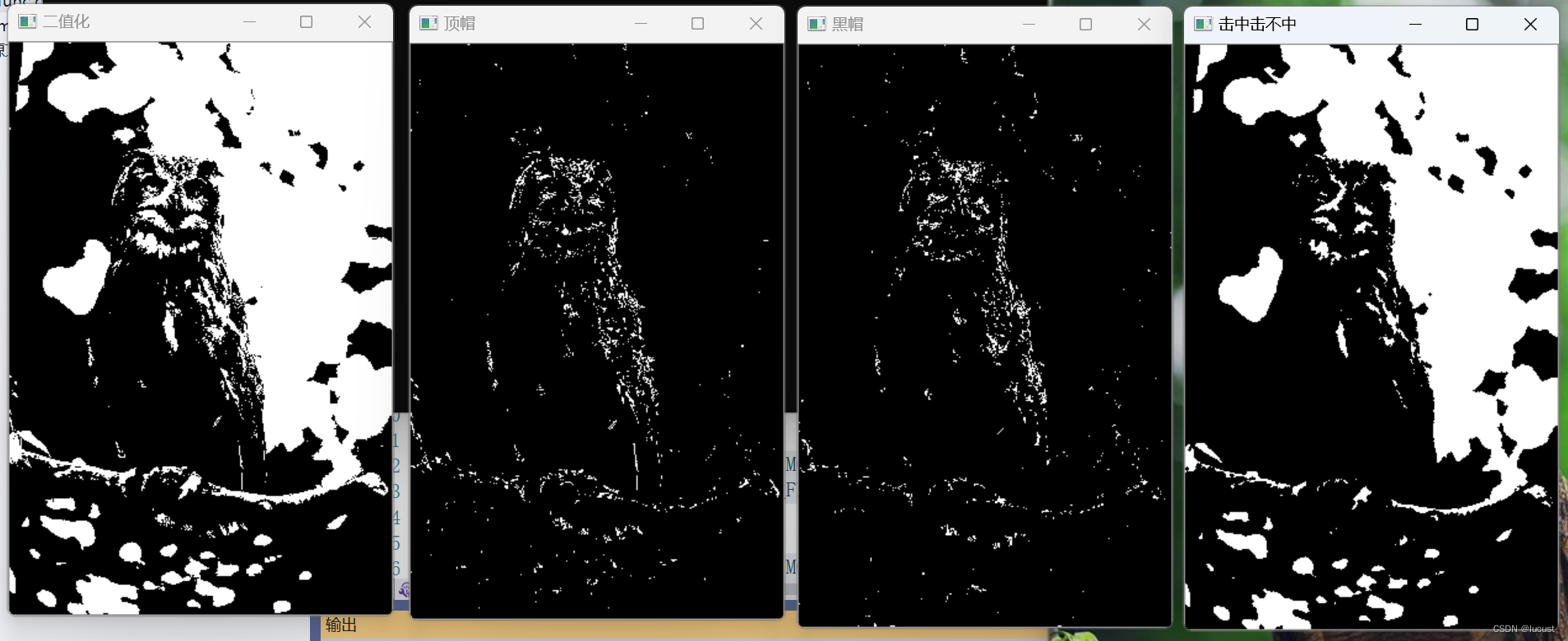
![[附源码]JAVA毕业设计仟侬堂茶具网站(系统+LW)](https://img-blog.csdnimg.cn/fdf7072654ee4a70a342088698026ee1.png)

